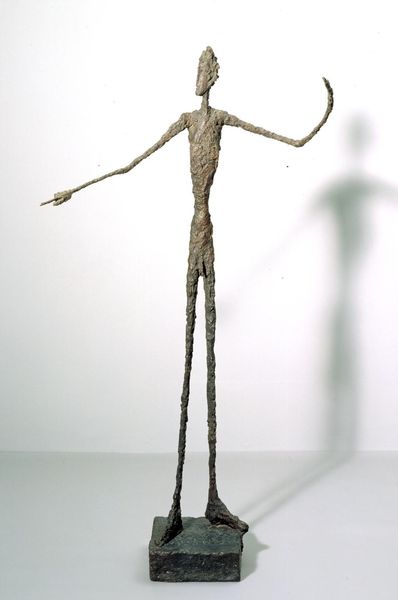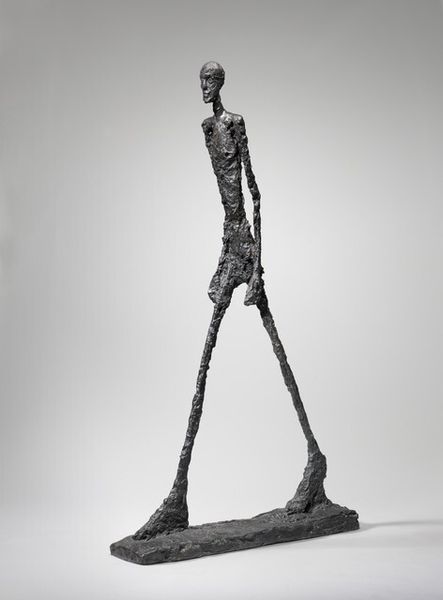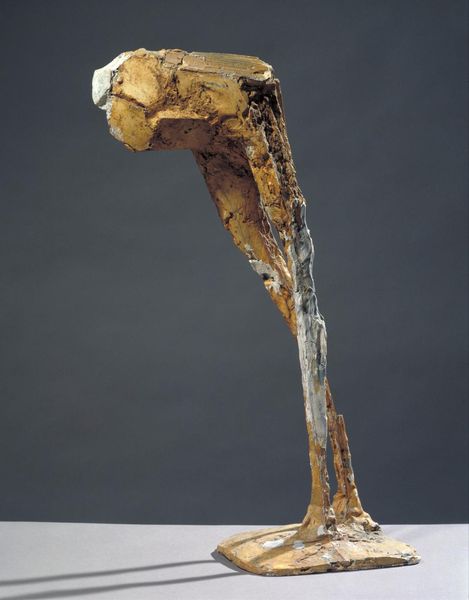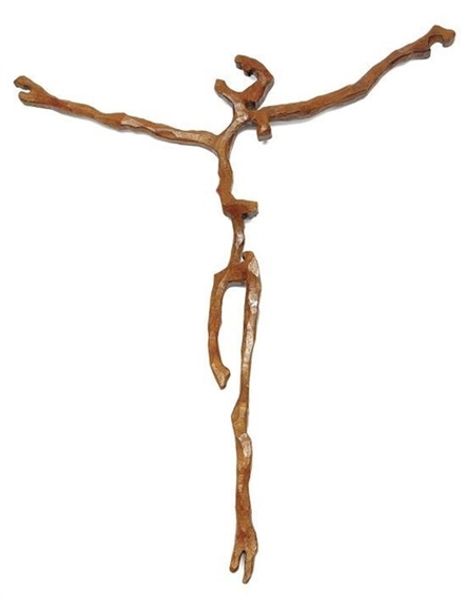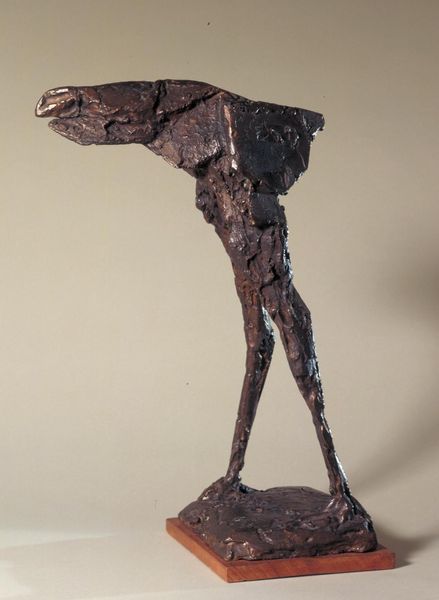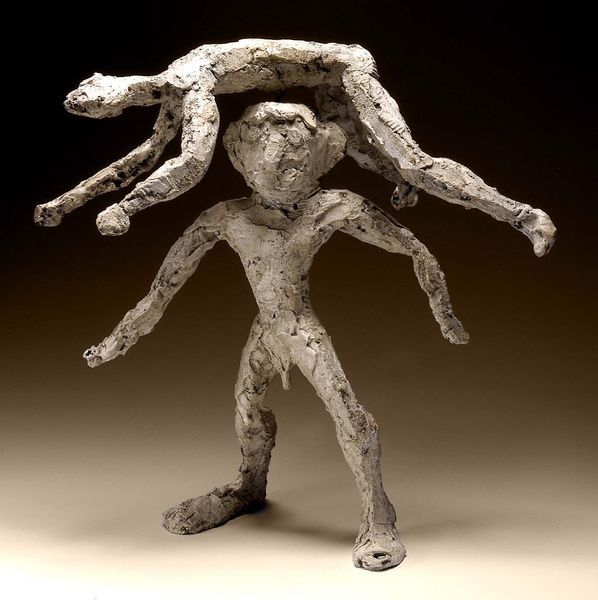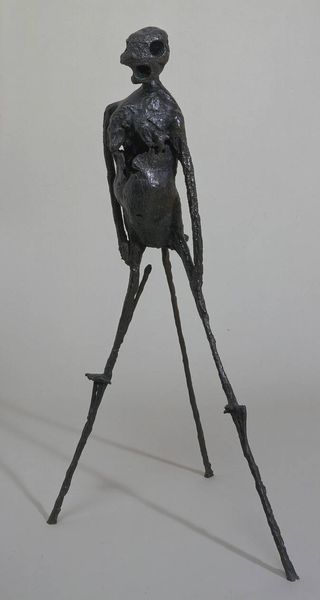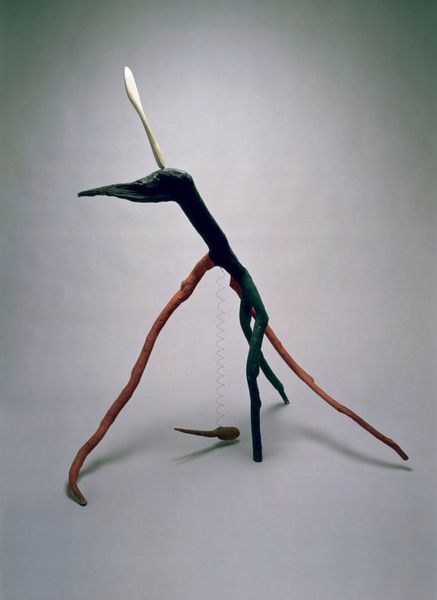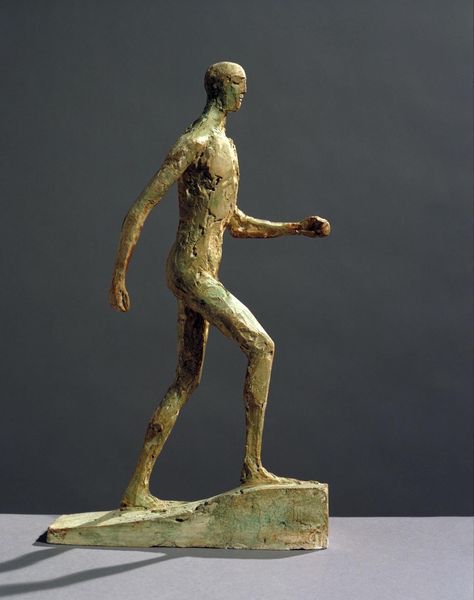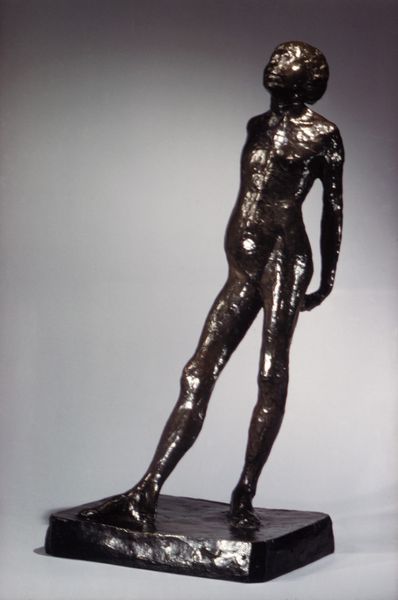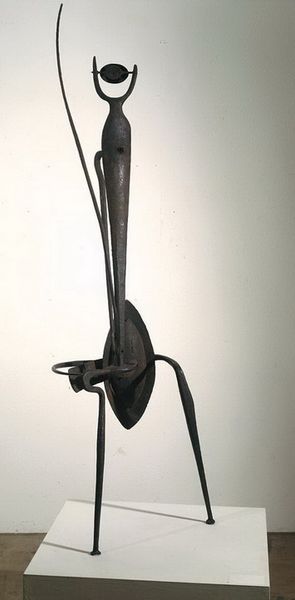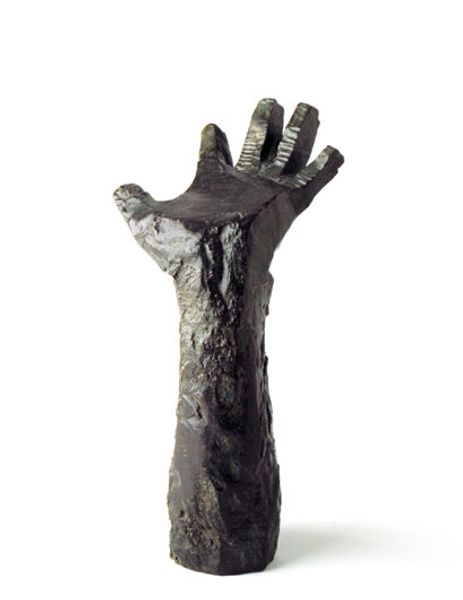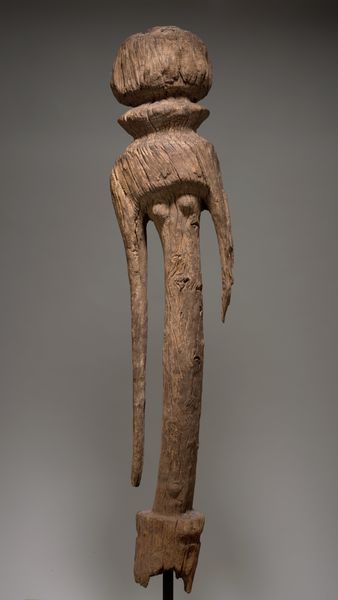
bronze, sculpture
#
portrait
#
sculpture
#
bronze
#
figuration
#
sculpture
#
modernism
Copyright: Alberto Giacometti,Fair Use
Editor: Here we have Alberto Giacometti’s bronze sculpture, *Walking Man I*, created in 1960. It’s haunting, this incredibly slender figure seemingly suspended in motion. What strikes you about it? Curator: Giacometti's work exists at the nexus of postwar anxiety and artistic innovation. How do you think the prevailing political climate, of the Cold War and existentialist philosophy, impacted the public’s understanding and acceptance of such radical figuration? Editor: It's hard to imagine it separate from that context – that feeling of fragility and the absurdity of existence seems palpable in the sculpture. Curator: Precisely. After World War II, there was a societal shift toward questioning previously held beliefs, searching for meaning amid devastation. Figures like *Walking Man* reflected a public grappling with unprecedented fears of obliteration and a reassessment of humanity’s place in the world. Its reception and acclaim signified art's growing role in voicing and grappling with the era's pervasive sense of unease. Did the art world readily accept this initially, or was there resistance? Editor: I imagine some critics found it too bleak or despairing. Curator: Exactly! Many saw it as challenging traditional heroic sculpture, rejecting notions of the idealized human form, but later championed its representation of human resilience in an age of mass violence. Considering this tension, what lasting legacy does *Walking Man I* hold for public art? Editor: I see a dialogue about the public's perception of strength and vulnerability. It also proves how powerfully art can both reflect and shape our cultural values during critical times. Curator: Agreed, this has helped me think of modern public art and society's continuous discourse on how it can reflect, interpret, and affect its time. Thank you!
Comments
No comments
Be the first to comment and join the conversation on the ultimate creative platform.
